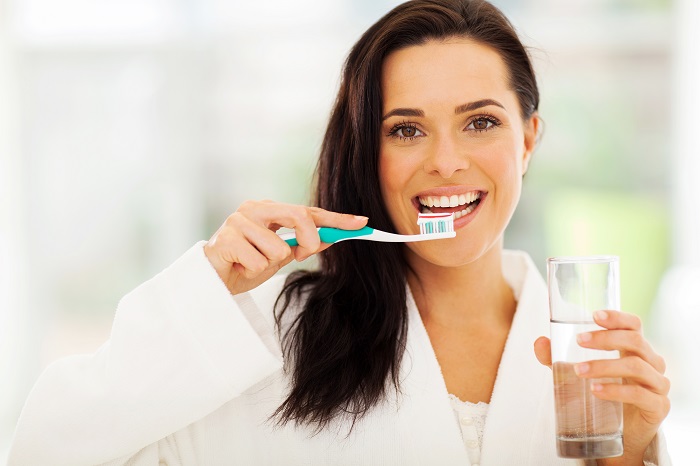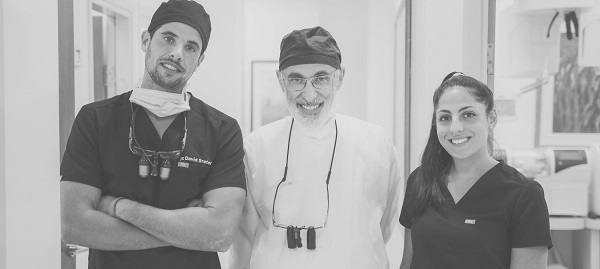
Caring for Your Teeth
- A look at toothbrushes
- Dietary Guidelines for Americans and MyPyramid
- Eating Habits for a Healthy Smile and Body
- Grinding - What does it Mean?
- Protecting Teeth with Mouthguards
- Tooth Whitening
- Fluoride - Nature's cavity fighter
Share This Page
Toothbrush design and materials have come a long way. Early forms of the toothbrush have existed for nearly 5000 years. Some ancient civilizations removed food with a “chew stick,” a thin twig with a frayed end that was rubbed against the teeth. During the last century or so, toothbrushes were crafted with bone, wood or ivory handles that held the stiff bristles of hogs, boars or other animals. The nylon-bristled toothbrush, as we know it today, was invented in 1938.
WHAT KIND OF TOOTHBRUSH SHOULD YOU CHOOSE?
There are two types of toothbrushes: manual and powered. The size and shape of the brush should fit your mouth comfortably, allowing you to reach all areas easily. Your dentist may offer suggestions about which type is suitable for your needs. No matter what type of toothbrush you choose, the American Dental Association recommends that you brush twice a day with a fluoride toothpaste to clean your teeth thoroughly and to provide fluoride protection against decay.
Look for toothbrushes that display the ADA Seal of Acceptance. The Seal assures you that the product has been evaluated by an independent body of scientific experts—the ADA Council on Scientific Affairs—for safety and effectiveness according to objective guidelines. To qualify for the Seal of Acceptance, the company must show that all of the toothbrush components are safe for use in the mouth. This means that the bristles are free of sharp or jagged edges and endpoints; the handle material is tested by the manufacturer to show durability under normal use; the bristles won’t fall out with normal use; and the toothbrush can be used without supervision by the average adult to provide a significant decrease in mild periodontal (gum) disease and plaque.
Powered toothbrushes also must meet the requirements of a safety laboratory such as Underwriters Laboratories, Northbrook, Ill. The manufacturers of powered toothbrushes also must provide evidence from at least one clinical investigation (research using human volunteers) to show that the product is safe for both soft and hard oral tissues and dental restorations.
Both manual and powered toothbrushes can effectively and thoroughly clean teeth. People who have difficulty using a manual toothbrush may find a powered toothbrush easier or more comfortable to use. Children may find that brushing with a powered toothbrush is fun. Whether you decide on manual or powered, choose a toothbrush that you like and find easy to use so that you’ll use it twice a day to thoroughly clean all of your tooth surfaces.
HOW CAN YOU KEEP YOUR TOOTHBRUSH CLEAN?
Rinse your toothbrush with tap water after brushing to remove any remaining toothpaste and debris. Store the brush in an upright position if possible and allow it to air dry until using it again. If more than one toothbrush is stored in the same holder or area, keep the brushes separated. Do not routinely cover toothbrushes or store them in closed containers. A moist environment, such as a closed container, is more conducive to the growth of microorganisms than is the open air.
Replace toothbrushes every three to four months. The bristles become frayed and worn with use and will be less effective at cleaning teeth. Toothbrushes wear more rapidly depending on factors unique to each patient. Check toothbrushes often for worn bristles and replace them more frequently if needed. Children’s toothbrushes may need to be replaced more frequently than adults’ toothbrushes.
For a list of oral hygiene products displaying the ADA Seal of Acceptance, visit “www
WHAT KIND OF TOOTHBRUSH SHOULD YOU CHOOSE?
There are two types of toothbrushes: manual and powered. The size and shape of the brush should fit your mouth comfortably, allowing you to reach all areas easily. Your dentist may offer suggestions about which type is suitable for your needs. No matter what type of toothbrush you choose, the American Dental Association recommends that you brush twice a day with a fluoride toothpaste to clean your teeth thoroughly and to provide fluoride protection against decay.
Look for toothbrushes that display the ADA Seal of Acceptance. The Seal assures you that the product has been evaluated by an independent body of scientific experts—the ADA Council on Scientific Affairs—for safety and effectiveness according to objective guidelines. To qualify for the Seal of Acceptance, the company must show that all of the toothbrush components are safe for use in the mouth. This means that the bristles are free of sharp or jagged edges and endpoints; the handle material is tested by the manufacturer to show durability under normal use; the bristles won’t fall out with normal use; and the toothbrush can be used without supervision by the average adult to provide a significant decrease in mild periodontal (gum) disease and plaque.
Powered toothbrushes also must meet the requirements of a safety laboratory such as Underwriters Laboratories, Northbrook, Ill. The manufacturers of powered toothbrushes also must provide evidence from at least one clinical investigation (research using human volunteers) to show that the product is safe for both soft and hard oral tissues and dental restorations.
Both manual and powered toothbrushes can effectively and thoroughly clean teeth. People who have difficulty using a manual toothbrush may find a powered toothbrush easier or more comfortable to use. Children may find that brushing with a powered toothbrush is fun. Whether you decide on manual or powered, choose a toothbrush that you like and find easy to use so that you’ll use it twice a day to thoroughly clean all of your tooth surfaces.
HOW CAN YOU KEEP YOUR TOOTHBRUSH CLEAN?
Rinse your toothbrush with tap water after brushing to remove any remaining toothpaste and debris. Store the brush in an upright position if possible and allow it to air dry until using it again. If more than one toothbrush is stored in the same holder or area, keep the brushes separated. Do not routinely cover toothbrushes or store them in closed containers. A moist environment, such as a closed container, is more conducive to the growth of microorganisms than is the open air.
Replace toothbrushes every three to four months. The bristles become frayed and worn with use and will be less effective at cleaning teeth. Toothbrushes wear more rapidly depending on factors unique to each patient. Check toothbrushes often for worn bristles and replace them more frequently if needed. Children’s toothbrushes may need to be replaced more frequently than adults’ toothbrushes.
For a list of oral hygiene products displaying the ADA Seal of Acceptance, visit “www


